
- Index
- Age
- Brand
- 21st Century Toys (12)
- Alert Line (18)
- Army (10)
- Arsa (10)
- Bolt Action (9)
- Buren (6)
- Did (15)
- Doxa (7)
- Dragon (33)
- Dragon Models (6)
- Forces Of Valor (24)
- Glycine (8)
- Handmade (43)
- Helvetia (19)
- King & Country (42)
- No Brand (7)
- Record (6)
- Ultimate Soldier (11)
- Warlord Games (21)
- Zenith (12)
- Other (3469)
- Conflict
- Style
- Antique (10)
- Army (8)
- Army Cap (2)
- Bomber Jacket (3)
- Casual (2)
- Leather Belt Holster (9)
- Leather Flap Holster (4)
- Luxury: Dress Styles (6)
- Military (160)
- Military Jacket (14)
- Military, Vintage (2)
- Motorcycle Jacket (7)
- Original (2)
- Overcoat (5)
- Pea Coat (2)
- Pendant (2)
- Signet (6)
- Trench Coat (7)
- Vintage (11)
- Wwii (2)
- Other (3524)
- Theme
- Type
- Action Figure (77)
- Badges (13)
- Binoculars (32)
- Boot (11)
- Coat (87)
- Equipment (11)
- Field Gear (159)
- Hat / Cap (51)
- Helmet (18)
- Jacket (101)
- Medals & Ribbons (11)
- Personal Gear (73)
- Pocket Watch (11)
- Ring (18)
- Soldier (16)
- Tactical Sling (26)
- Tank (36)
- Uniform (41)
- Uniform / Clothing (119)
- Wristwatch (109)
- Other (2768)
WWII 1944 German Army Reconnaissance Fi-156 Storch' W. E. F. T. U. P. ID Poster
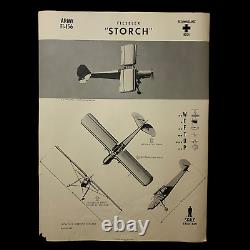
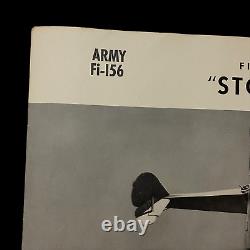
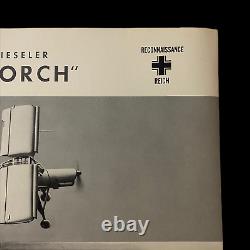
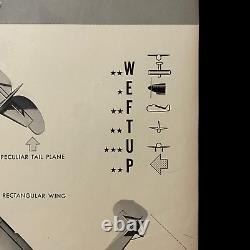
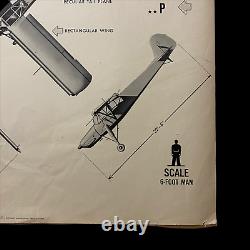
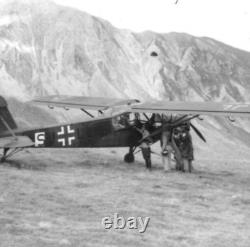


Size: 19 x 25 inches. This original'RESTRICTED' aircraft identification poster was published by the U. Naval Aviation Training Division Feb 1944. This poster was posted as a training tool as well as an in theater ID poster to help U.
And other Allied pilots, bomber crews and Naval personal to identify Allied and enemy aircraft. Or Wing, Engine, Fuselage, Tail, Undercarriage, Peculiarities was a system set up for the purpose of aircraft identification and recognition. World War II saw some of the first introduction of these aircraft ID poster to prevent friendly fire and more accurate plane recognition in combat. It was believed these posters alone could save countless lives from friendly aircraft-on-aircraft or friendly anit-aircraft fire. These posters also could cut down precious second pilots, bomber gunners, and naval gun crews would have to ID a plane flying towards them intern saving their lives by shooting first.
Each poster provides the silhouettes, dimensions, and relevant information to educate both air and ground personnel in aircraft identification. Immediate identification of aircraft, friendly or not, was essential in order for the observer whether in the air e.Pilot, gunner, or patrol observer, or on the ground, e. Anti-aircraft crew to determine his next course of action e. Acknowledge, attack, evade, or report. Each poster details a large clean sky and background image of the specified aircraft located as the main top imagine on the poster. It also contains important'peculiarities' such as where certain gun emplacements are located, other special aircraft features, as well as wing and length measurements.
The Fieseler Fi 156 Storch (English: Stork) was a small German liaison aircraft built by Fieseler before and during World War II. The Storch was deployed in all European and North African theaters of World War II. In addition to its liaison function, a number were used to fly a battalion of Infantry Regiment Grossdeutschland behind enemy lines during the invasion of Belgium. Field Marshal Rommel used Storch aircraft for transport and battlefield surveillance during the North African desert campaign of World War II. In 1943, the Storch played a role in Operation Eiche, the rescue of deposed Italian dictator Benito Mussolini from a boulder-strewn mountain-top near the Gran Sasso.
Even though the mountain was surrounded by Italian troops, German commando Otto Skorzeny and 90 paratroopers used gliders to land on the peak and quickly captured it. However, the problem of how to get back off remained. A Focke-Achgelis Fa 223 helicopter was sent, but it broke down en route.Instead, pilot Heinrich Gerlach flew in a Storch. It landed in 30 m (100 ft), and after Mussolini and Skorzeny boarded, it took off in 80 m (250 ft), even though the aircraft was overloaded. The Storch involved in rescuing Mussolini bore the radio code letters, or Stammkennzeichen, of "SJ + LL" in the motion picture coverage of the daring rescue.
On 26 April 1945, a Storch was one of the last aircraft to land on the improvised airstrip in the Tiergarten near the Brandenburg Gate during the Battle of Berlin and the death throes of the Third Reich. It was flown by the test pilot Hanna Reitsch, who flew Generalfeldmarschall Robert Ritter von Greim from Munich to Berlin to answer a summons from Hitler. A Storch was the last aircraft shot down by the Allies on the Western Front and another was downed by a direct Allied counterpart of the Storch, an L-4 Grasshopper, the military version of the well-known American Piper J-3 Cub civilian training and sport aircraft.
The pilot and co-pilot of the L-4, lieutenants Duane Francis and Bill Martin, opened fire on the Storch with their. 45 caliber pistols, forcing the German air crew to land and surrender.

